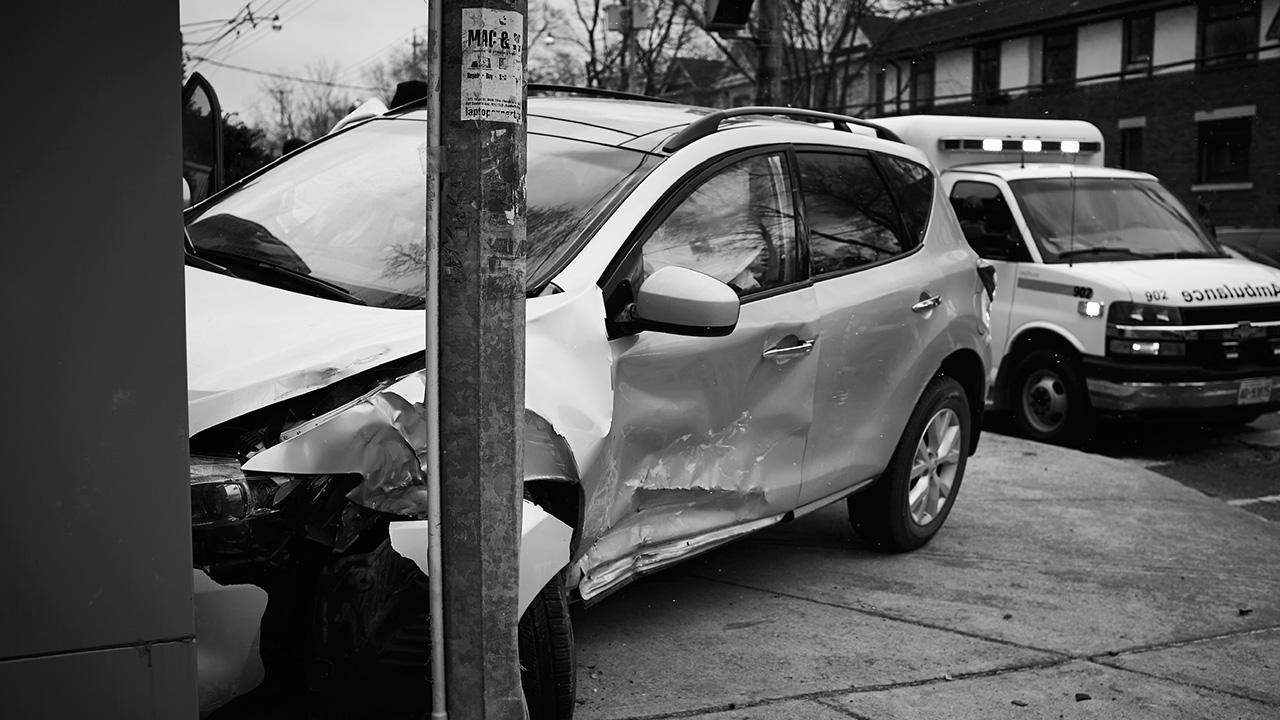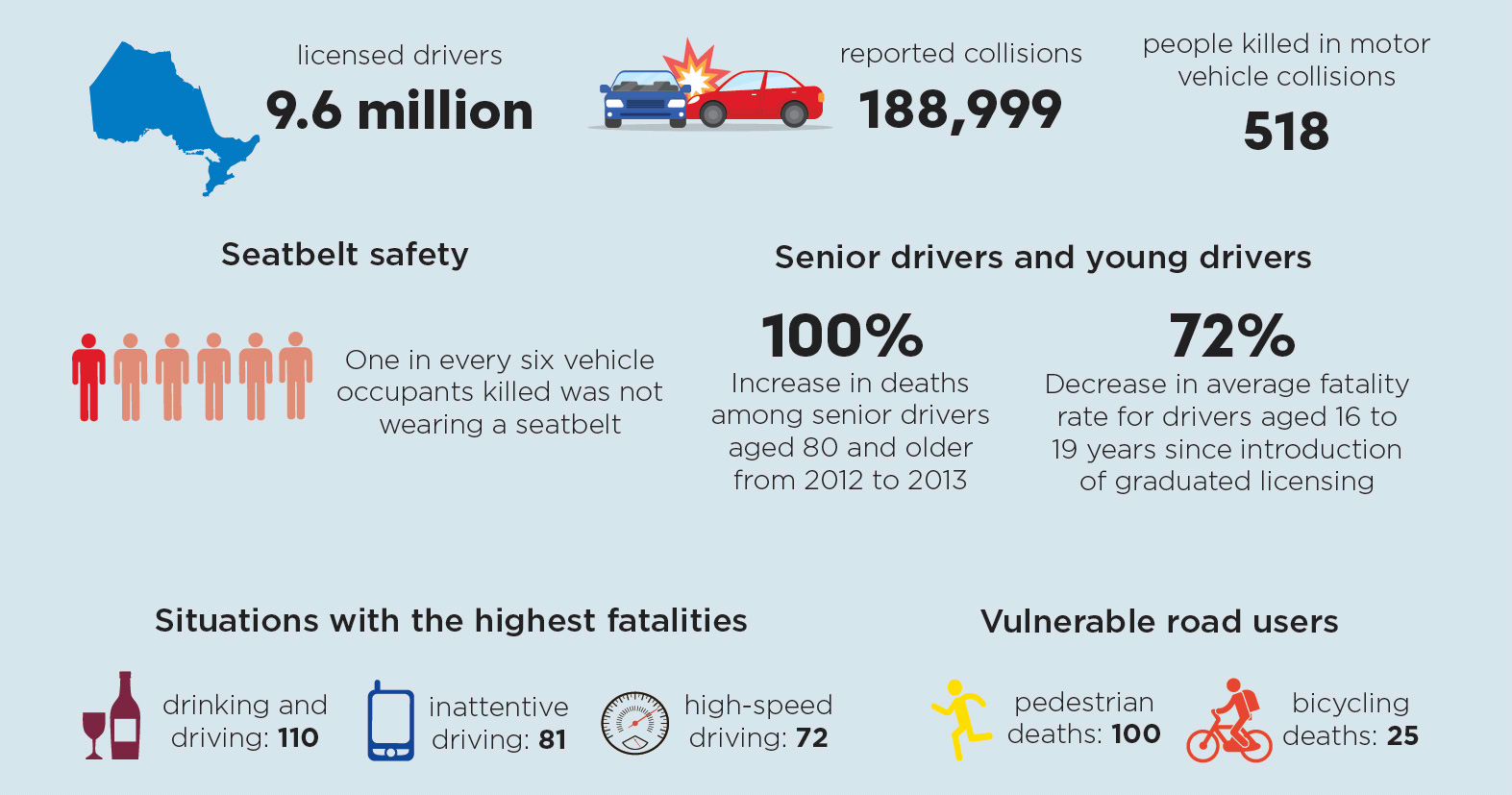A matter of perspective

Study illuminates surprising source of collisions
June 12, 2017

Safe driving relies on good eyesight and an accurate visual sense of your surroundings. Weather conditions also affect our judgment in measuring distance and speed. Despite drivers knowing to take extra caution in inclement weather, they may be unaware of the potential danger while driving on a sunny day.
Researchers at Sunnybrook Research Institute (SRI) recently led a study that shows bright sunlight may create an optical illusion that can lead to driver error. A visual phenomenon known as aerial perspective can cause drivers to misjudge the distance of objects on the road, which in turn can result in a serious collision. Aerial perspective renders the depth or distance of close objects as crisp and clear, and farther objects as faded, hazy or dim. An example of this illusion can be seen in Leonardo da Vinci’s portrait of the Mona Lisa. He was one of the first painters to use the technique of aerial perspective. The Mona Lisa’s face is painted in crisp, clear light to appear close, and the mountains in the background are shown in dim, dusky light to appear distant. The same artistic methods are used for rendering 3-D effects in modern movies.
“Bright sunlight is a natural factor in aerial perspective because it increases the contrast, resolution and luminosity of surrounding landscapes,” says Dr. Don Redelmeier, director of Evaluative Clinical Sciences at SRI and a clinician-scientist in the Tory Trauma Research Program. He holds the Canada Research Chair in Medical Decision Sciences, a field that explores how people formulate judgments and make decisions, and has applied much of his expertise to studies that aim to prevent road traffic crashes.
“What we think goes on under bright sunlight, under the most benign conditions possible, is that all of the terrain in the distance seems unduly close,” he says about travel velocity. “The approach and speed of surrounding landscapes seems unduly slow [for drivers]. For example, the mountain in the distance appears crisp, so the driver thinks he or she can get to it in about five seconds. As a consequence of that, people adjust by accelerating faster. That is why we think the underlying ‘optical illusion’ can lead to a higher risk of a life-threatening motor vehicle incident under bright sunny conditions.”
Motor vehicle collisions are a major cause of disability and death in people of all ages. An estimated 1.3 million people die per year from a car crash—an amount that is on par with worldwide deaths from lung cancer. Injuries from motor vehicle crashes can range from mild to severe. They include concussion, bleeding in the brain, broken bones, pelvic fractures, obstructed airway, spinal cord compression and abdominal organ damage. Often, they lead to long-term complications.
Most life-threatening crashes are caused by too much speed, says Redelmeier, who is also a scientist at the Institute for Clinical Evaluative Sciences and a professor of medicine at the University of Toronto. “With modern automobiles, you can’t tell the difference between going 60 miles per hour versus 60 kilometres per hour, even though your risk of a life-threatening crash has gone up by more than 100%,” he says. “[The drive] is just so comfortable and smooth that unless you deliberately look at the speedometer your eyes will trick you every time, especially under bright sunny conditions.”
Redelmeier and colleagues collected data on car crashes involving patients hospitalized at Sunnybrook, Canada’s largest trauma centre, from Jan. 1, 1995 to Dec. 31, 2014. The study aimed to evaluate the prevailing weather conditions at the time and place of the crash compared to weather at the same hour and location on days that served as “controls” one week earlier and one week later.
Researchers found bright sunlight was present in about one-third of daytime collisions. Most patients were injured during daylight hours, and bright sunlight was the most common weather condition at the time and place of the crash. A total of 11,539 patients were injured during the study period through 11,095 separate life-threatening crashes. The average patient was a middle-aged male driver with no major illness in whom alcohol was not detected. The results, published in Medicine, showed the risk of a life-threatening collision was 16% higher during bright sunlight than during “normal” weather such as a cloudy or overcast day, and excluding rainy, snowy or stormy conditions. “Sixteen per cent is a very big number,” says Redelmeier. “For perspective, your air bag is only going to make a 10% difference in the chance of a life-threatening injury, or snow tires in the winter make only about a 5% difference.”
Although the weather and traffic conditions cannot be changed, driving behaviour can reduce the risk of a crash. “It can be entirely avoidable. You just have to adjust your attitude slightly and slow down. Be a little bit more aware,” says Redelmeier. Public education and traffic enforcement can also help reinforce standard safety practices, like respecting speed limits, minimizing distractions, using a seatbelt, and not drinking and driving. His take home message: “Drive carefully so you don’t ruin a beautiful day with an ugly crash.”
Road Safety in Ontario By the Numbers*

Read text-only version of above infographic
Road Safety in Ontario By the Numbers*
- 9.6 million licensed drivers
- 188,999 reported collisions
- 518 people killed in motor vehicle collisions
Seatbelt safety
- One in every six vehicle occupants killed was not wearing a seatbelt
Senior drivers and young drivers
- 100% increase in deaths among senior drivers aged 80 and older from 2012 to 2013
- 72% decrease in average fatality rate for drivers aged 16 to 19 years since introduction of graduated licensing
Situations with the highest fatalities
- Drinking and driving: 110
- Inattentive driving: 81
- High-speed driving: 72
Vulnerable road users
- Pedestrian deaths: 100
- Bicycling deaths: 25
*Source: Ontario Road Safety Annual Report 2013
Redelmeier’s research was supported by the BrightFocus Foundation, Canadian Institutes of Health Research and Comprehensive Research Experience for Medical Students at the University of Toronto.



